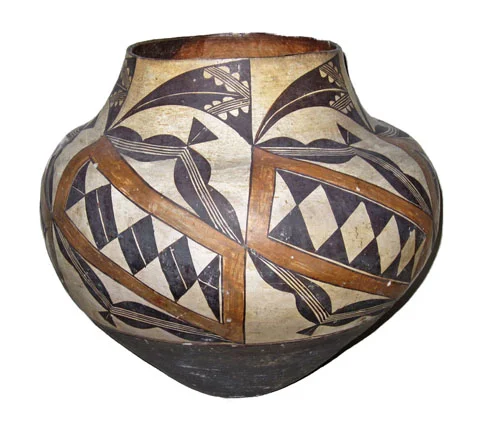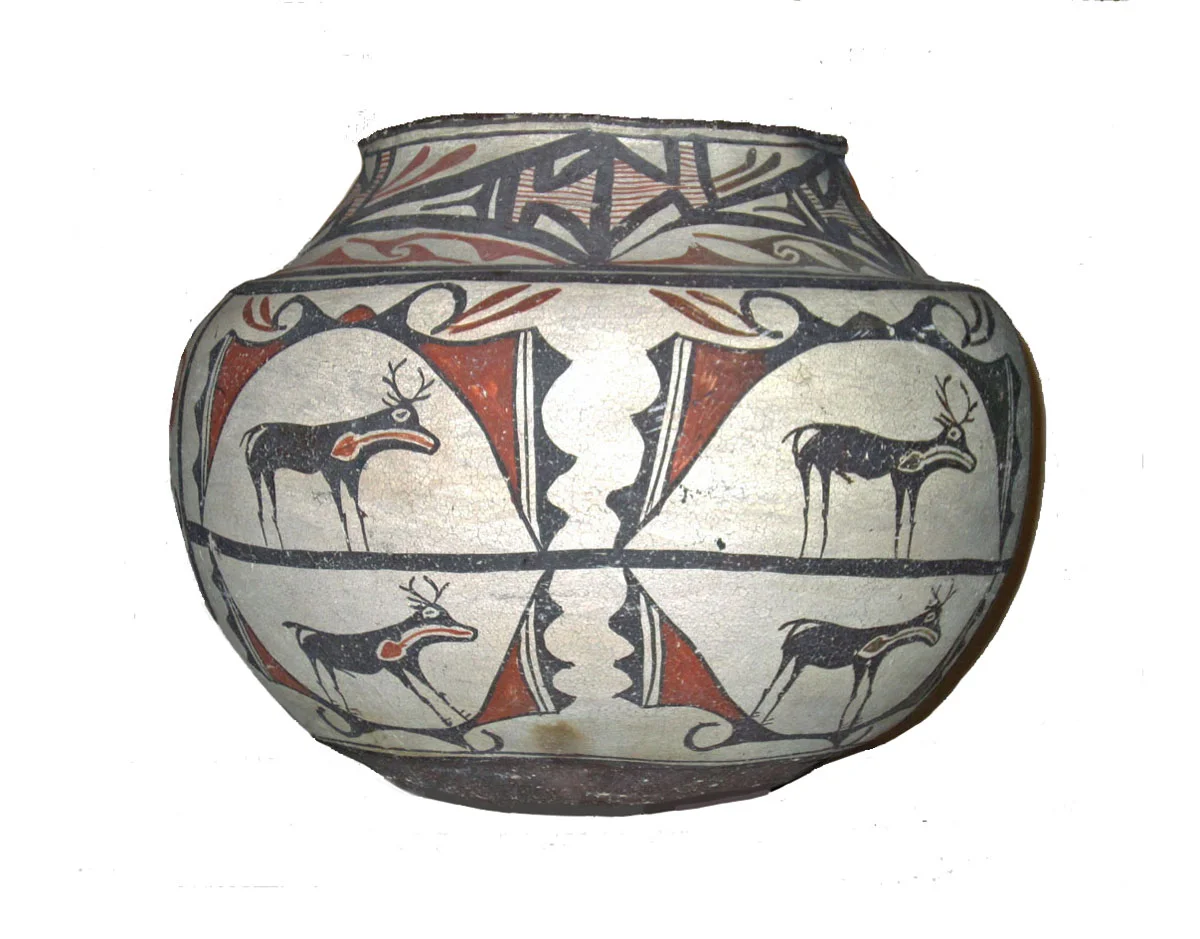Acoma polychrome water jar
Acoma polychrome water jar
12" diameter x 11" high
Excellent condition (minor rim chips, which are normal wear as would be expected on a pottery vessel of this age)
SOLD
(MC1693)
ex: William Channing; Dwight and Lorri Lanmon Collection (purchased in 1985); published in Lanmon and Harlow, The Pottery of Acoma Pueblo (2013), fig. 10.24.
From The Pottery of Acoma Pueblo (2013), fig 10.24: "The shape of the jar illustrated in figure 10.24 becomes common at Acoma in the 1890s, but the angular surface flexion at the top of the dark brown underbody identifies the jar as being earlier than that. It is also a rare example of the use of hachure on vessels made before about 1900. Here, parallel thin black lines ornament lobe triangular attachments that bear close resemblance to hachured triangular motifs seen frequently on Zuni pottery. While brown rectangles are repeated around the circumference, the design is given more visual interest by decorating them alternately with chains of split black rectangles or black triangles, which form negative (white) rectangles.The brown rectangles touch at diagonal corners, but (in a feature unusual at Acoma) the figures are fully outlined and there is no color continuity between them. The neck is decorated with a series of claw-shaped, curved triangles with internal bands of hachure and negative scallops. There is no shoulder band separating the neck and mid-body areas. Therefore, this jar might be classified as having designs encompassing the entire body, but we include it in this group because of the difference between the mid-body and neck designs)."








